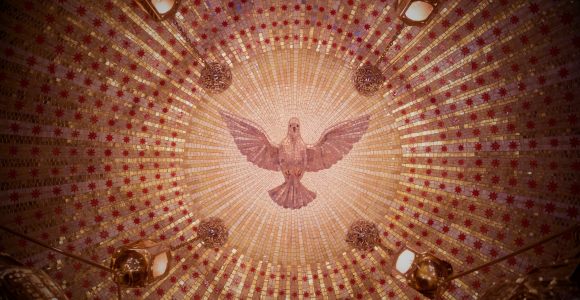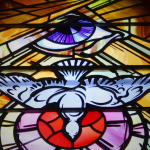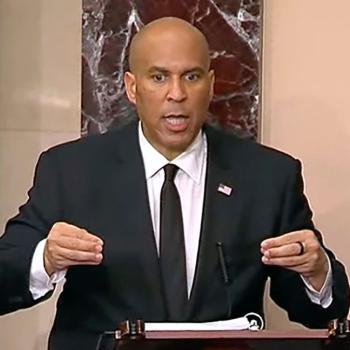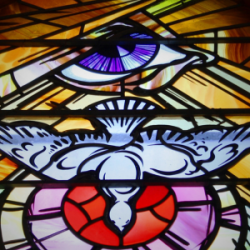
Our reading this second week of Easter is on of the post resurrection stories from the gospel of John:
On the evening of that first day of the week, when the disciples were together, with the doors locked for fear of the Jewish leaders, Jesus came and stood among them and said, “Peace be with you!” After he said this, he showed them his hands and side. The disciples were overjoyed when they saw the Lord.
Again Jesus said, “Peace be with you! As the Father has sent me, I am sending you.” And with that he breathed on them and said, “Receive the Holy Spirit. If you forgive anyone’s sins, their sins are forgiven; if you do not forgive them, they are not forgiven.”
Now Thomas (also known as Didymus), one of the Twelve, was not with the disciples when Jesus came. So the other disciples told him, “We have seen the Lord!”
But he said to them, “Unless I see the nail marks in his hands and put my finger where the nails were, and put my hand into his side, I will not believe.”
A week later his disciples were in the house again, and Thomas was with them. Though the doors were locked, Jesus came and stood among them and said, “Peace be with you!” Then he said to Thomas, “Put your finger here; see my hands. Reach out your hand and put it into my side. Stop doubting and believe.”
Thomas said to him, “My Lord and my God!”
Then Jesus told him, “Because you have seen me, you have believed; blessed are those who have not seen and yet have believed.”
Jesus performed many other signs in the presence of his disciples, which are not recorded in this book. But these are written that you may believe that Jesus is the Messiah, the Son of God, and that by believing you may have life in his name. (John 20:19-31)
This is Part 1 of So Send I You
Welcome Readers! Please subscribe to Social Jesus Here.
The post crucifixion/resurrection appearance stories of the Jesus tradition were very important to the early church, and they serve a purpose. The story in our reading this week is about the bestowal of the Holy Spirit on the initial group of disciples, and it carefully includes Thomas. Each time an early church leader is named in the gospels, they are named for the purpose of legitimizing their leadership. This is true whether it be James, Peter, John the beloved, Mary Magdalene, or, as in this case, Thomas.
Each gospel has its own version of these stories. In Luke’s version, the disciples don’t receive the Holy Spirit until Pentecost, while here in John’s version, the disciples receive the Holy Spirit on Resurrection Day. It’s important to let each version of the Jesus story stand on its own rather than trying to force them all to say the same thing. This allows the authors to present the points they were attempting to promote and gives us a more honest picture of the diverse, many-voiced nature of the Jesus community at that time. We’ll begin with Mathew’s version, next.
(Read Part 2)
Are you receiving all of RHM’s free resources each week?
Begin each day being inspired toward love, compassion, justice and action. Free.
Sign up at HERE.


















